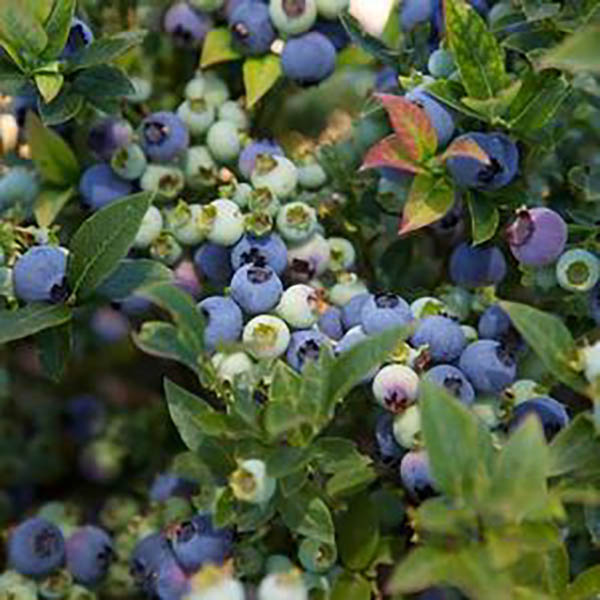You're shopping: DAVIDSONVILLE
(change store)
Departments - BLUEBERRY 'JELLY BEAN' 2G

BLUEBERRY 'JELLY BEAN' 2G
no reviews for this product. Login to place a review.
Your Price $23.50
Item Number 284159
In store quantity:
0
$23.50/ EA
Blueberry 'Jelly Bean'
2-Gallon
Height: 1-2 feet tall.
Spread: 2-3 feet.
Sunlight: Full sun to partial shade.
Hardiness Zone: 4a.
Other Names: Vaccinium corymbosum 'Jelly Bean'
Description:
A compact, dwarf blueberry variety known for its exceptional sweetness and ornamental appeal. 'Jelly Bean' produces plump, dark blue berries with a flavor reminiscent of homemade blueberry jelly. Its small, mounded growth habit makes it perfect for container gardening, small landscapes, and edible borders.
Edible Qualities:
Blueberry 'Jelly Bean' is valued for its intensely sweet berries with a rich, classic blueberry flavor. The fruit ripens in mid to late summer and holds well on the bush.
The fruit is most often used in the following ways:
- Fresh Eating
- Baking
- Smoothies
- Preserves
- Freezing
Features & Attributes:
Blueberry 'Jelly Bean' features dense, dark green foliage that takes on brilliant red hues in the fall. In early spring, it produces clusters of small, white bell-shaped flowers that attract pollinators. Its compact, rounded shape makes it a fantastic choice for small gardens and decorative containers.
This is a deciduous shrub with a naturally mounded, bushy growth habit. It is self-pollinating but benefits from being planted near another blueberry variety for increased yields.
Aside from its primary use as an edible, Blueberry 'Jelly Bean' is suitable for the following landscape applications:
- Edible Hedges
- Container Growing
- Rock Gardens
- Home Gardens
Planting & Growing:
Blueberry 'Jelly Bean' will grow to be about 1-2 feet tall at maturity, with a spread of 2-3 feet. It has a low canopy with a typical clearance of 6-12 inches from the ground. It grows at a slow to moderate rate and, under ideal conditions, can be expected to live for 30 years or more.
This shrub thrives in full sun to partial shade and well-drained, acidic soil. It requires consistent moisture, particularly during fruit development, and benefits from an annual layer of mulch to retain soil moisture and regulate temperature. Minimal pruning is needed to maintain its naturally rounded shape.
Additional Characteristics:
- Mid to Late Season Ripening
- Self-Pollinating (Improved Yields with Cross-Pollination)
- Compact Growth Habit
- Cold Hardy
- Excellent Fall Foliage Color
